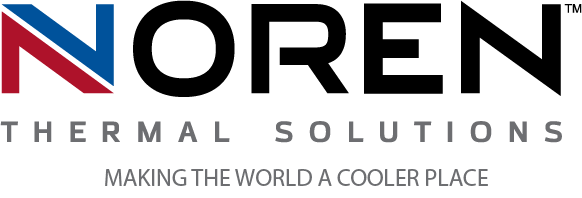The Difference Between Heat Pipes and Cold Plates
When it comes to thermal management for advanced technology, there are several efficient, high-performance options, such as heat pipes and cold plates. The most appropriate solution depends on a given system’s unique specifications, though both options can offer a wealth of savings in costs, energy consumption, and footprint. At Noren Thermal, our expertise includes helping clients choose the thermal management solution that best fits their needs and then delivering units that exceed their expectations.
Heat Pipes for Unique System Designs
A heat pipe utilizes the latent heat of vaporization to manage electrical waste heat continuously. The cooling fluid within heat pipes vaporizes as it absorbs heat and then moves to another area of the cooling unit, releasing the heat and changing it to liquid. The process doesn’t require complicated machinery, which helps save energy; however, one of the biggest benefits of heat pipes is that they can be crafted to curve and bend as necessary to fit into any system’s unique design.
Cold Plates for Larger-Scale Cooling
Cold plates may be the most effective solution for some systems and applications. Metal cold plates contain flow paths that are machined into them, and the cooling fluid flows through these paths. Instead of the phase-change cooling that heat pipes utilize, cold plates dissipate electrical waste heat through conduction and convection. This ability often makes cold plates the optimal solution for applications where systems must be uniformly cooled across large surface areas.
Besides cold plates and heat pipes, Noren is also highly experienced in custom-designing various thermal management solutions that exceed our clients’ expectations. To learn more, call Noren Thermal, Inc. at 512 595 5700.
Heat Pipes for Unique System Designs
A heat pipe utilizes the latent heat of vaporization to manage electrical waste heat continuously. The cooling fluid within heat pipes vaporizes as it absorbs heat and then moves to another area of the cooling unit, releasing the heat and changing it to liquid. The process doesn’t require complicated machinery, which helps save energy; however, one of the biggest benefits of heat pipes is that they can be crafted to curve and bend as necessary to fit into any system’s unique design.
Cold Plates for Larger-Scale Cooling
Cold plates may be the most effective solution for some systems and applications. Metal cold plates contain flow paths that are machined into them, and the cooling fluid flows through these paths. Instead of the phase-change cooling that heat pipes utilize, cold plates dissipate electrical waste heat through conduction and convection. This ability often makes cold plates the optimal solution for applications where systems must be uniformly cooled across large surface areas.
Besides cold plates and heat pipes, Noren is also highly experienced in custom-designing various thermal management solutions that exceed our clients’ expectations. To learn more, call Noren Thermal, Inc. at 512 595 5700.

